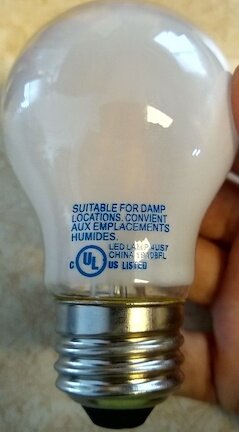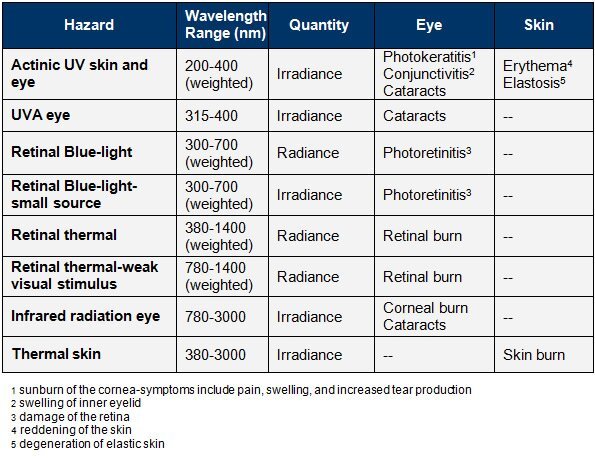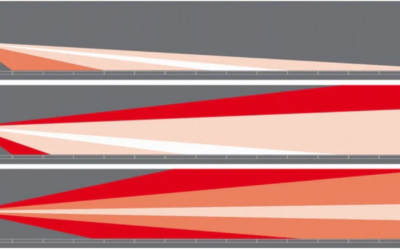One important aspect of any design is user safety. This is especially important when using light sources like lasers and LEDs that may be observed by the naked eye. Disregarding safety can lead to product recalls, lawsuits, and harm to users.
To protect users, a number of standards related to light and eye safety have been developed, including IEC 62471: Photobiological Safety Of Lamps And Lamp Systems standard and the ANSI Z136 standard.
At the bottom of this post, you’ll find a free calculator we’ve developed for use in our projects, but there are other free and paid laser eye safety calculators on the market including https://www.lia.org/evaluator/od.php ( free but limited) https://www.lia.org/resources/laser-safety-tools/laser-safety-hazard-calculator( paid ) and http://www.lasersafepc.com/ ( paid and no longer supported)
The IEC62471 defines the exposure times, measurement techniques, and classifications to evaluate any possible biological damage for incoherent light sources like LEDs. The standard covers any light sources from the UV range (200nm) all the way to the far infrared (3000nm). Many countries do not yet require IEC 62471 but their own certification bodies are, in one way or another, compliant with it. For example, in the US, light sources have an UL certification in compliance with IEC62471. In other countries like Mexico, NOM certifications are required to comply with IEC62471 requirements to be exported to their North American and European commercial partners.
These standards are very useful because, in the early stages of a design, they allow us to calculate if a specific illumination or laser system poses any risk.

Figure 1. UL certified light bulb sold in the US
Hazards
The potential damage caused by light sources can be divided into damage to the skin and eyes. The possible damage is a result of a combination of exposure time, wavelength, and light intensity. Table 1 shows the different kinds of damage that light sources can produce. Notice how there is an overlap on several ranges, so that a single light source can have multiple consequences if incorrectly designed.

Light sources are also classified into four groups depending on the allowed exposure time before damage occurs. These four groups are:
Exempt – No photobiological hazard
Risk Group 1 – No photobiological hazard under normal behavioral limitations
Risk Group 2 – Does not pose a hazard due to aversion response to bright light or thermal discomfort
Risk Group 3 – Hazardous even for momentary exposure
In order to determine what is the risk factor of a light source, the irradiance needs to be measured at a determined distance. For general light sources, the irradiance must be measured at a distance where the light source produces 500 lux. For other light sources, the measuring distance is set at 200 mm.
Safety Calculator
If you need to evaluate your light sources, we highly recommend that you take a look at the IEC62471 standard and use the safety calculator we developed that can be downloaded with this link. Please do your own research and work with an expert if you are not familiar with eye safety requirements.
When you use the provided calculate please take in considerations the following:
1. This worksheet is aimed for computation of Maximum Permissible Exposure ( MPE) for light sources.
2. The considered light sources must have the follow features:
2.1 Wavelength range: 0.700 – 1.05 micron
2.2 Point or extended luminous surface
2.3. CW or modulated in range of 10 ^-13 – 3*1-^4 sec
2.4. Please pay attention on the data measurement units. all input data should be inserted in proper units that are marked about every cell the data is inserted in.
3. The sheet “Main” is the only sheet the user may insert the input data. Do not edit the other sheets because that will affect the way calculations are made.





